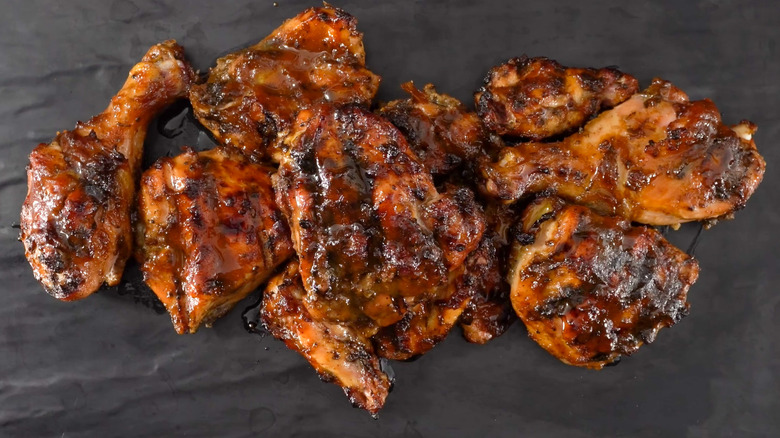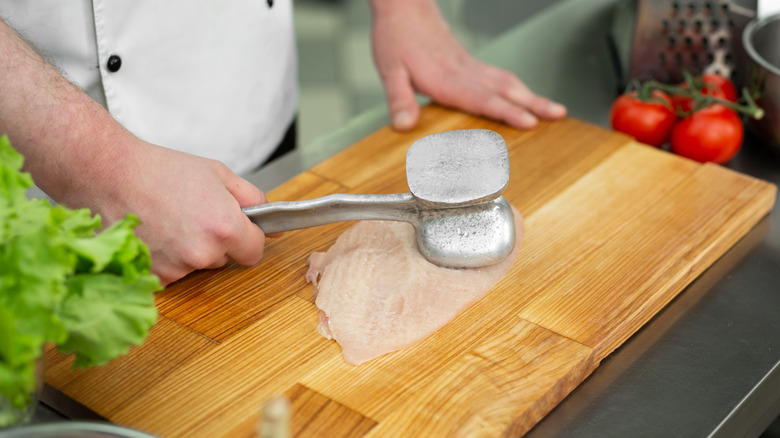Baking BBQ Chicken Breasts? Follow This Step For Tender, Juicy Results
Oven-baked barbecue chicken breasts are a great option for a quick and convenient weeknight meal, but one of the most crucial mistakes you can make is not flattening them. This simple step will help ensure your poultry comes out tender and juicy every time. To find out why this trick is so effective, Food Republic consulted Nicole Johnson, food blogger and recipe developer at Or Whatever You Do.
According to Johnson, it all comes down to the chicken breast's shape. "They are thicker at one end, thinner at the other," she explained, likening them to a kind of slope. "If you bake it as-is, the thinner end will be dry before the thick end is cooked through."
This uneven cooking doesn't just affect texture — it can also pose a food safety risk, since the thinner parts may appear done while the thicker sections remain undercooked. Flattening solves this issue, as an even thickness "keeps the whole piece juicy, and gives you a better sear if you're browning first," Johnson said. The technique is not only useful for baking, but also for pan-frying, grilling, or roasting. Once your chicken breasts are evenly flattened, simply slather them with your barbecue sauce of choice, pop them in the oven, and enjoy tender, juicy perfection in every bite.
The best technique for flattening chicken breasts
Flattening chicken can be done in a few ways, ranging from butterflying to spatchcocking. While spatchcocking is reserved for whole chickens, butterflying is an effective method for individual breasts. To do this, place the breast on a cutting board and, using a sharp knife, carefully slice horizontally almost all the way through. Then open it up to create a thinner, more even piece of meat that will cook more consistently.
According to Nicole Johnson, the best method for flattening chicken breasts is to "put the chicken between two pieces of plastic wrap or inside a zip-top bag, and then use the flat side of a meat mallet (or a sturdy rolling pin)." The plastic prevents tearing and keeps your workspace clean. Johnson recommends starting in the center of the breast and working slowly outward, using light, even taps. "This method keeps the fibers intact so the meat stays tender," she added.
The goal isn't to make the chicken paper-thin, but to achieve an even thickness of about ¼ inch, allowing it to cook uniformly so the thinner end doesn't dry out while the thicker end is still undercooked. Over-pounding can make the meat mushy, overly thin, or cause it to tear, which compromises both texture and presentation. "You're not pounding it into oblivion, you're just evening things out," Johnson reminded us.


